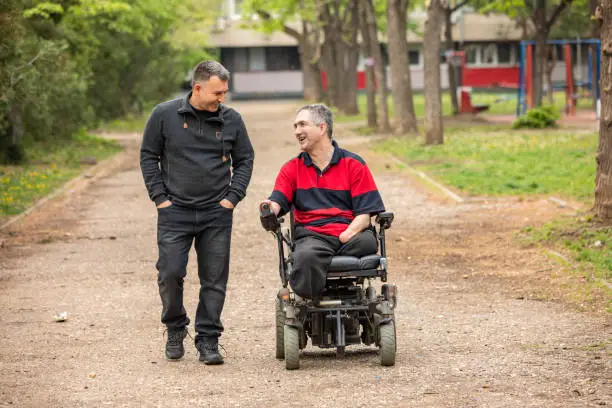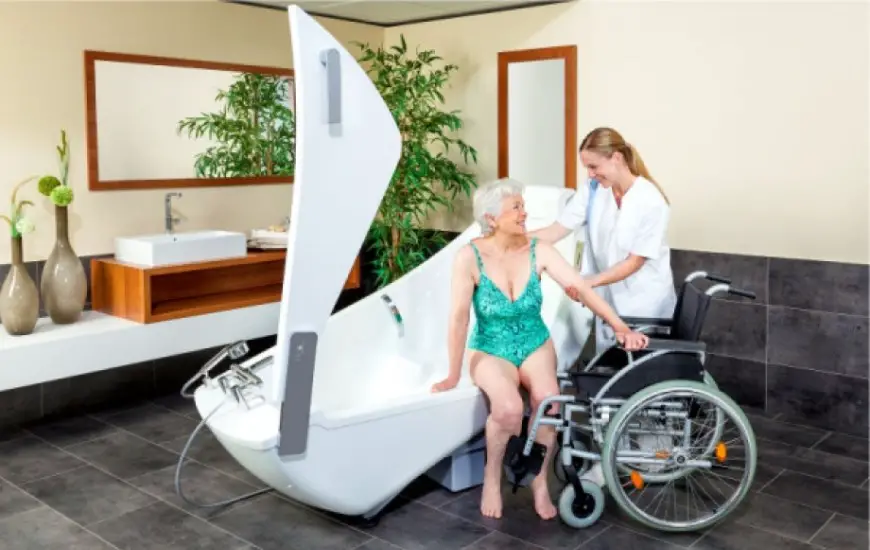The process of transferring a bilateral amputee has to do with moving them from their wheelchair to the bed, chair, floor, or their most preferred position and vice versa.
Transferring a bilateral amputee can be an arduous task for many people if they don’t know the processes or strategies involved.
Doing the transfer can, however, be a piece of cake if you’re armed with the right information.
This article is a must-read if you’re looking for the best guide on how to transfer a bilateral amputee successfully without hassles.
Table of Contents
- What is Bilateral Amputation?
- Causes of Bilateral Amputation
- Types of Bilateral Amputation
- How to Aid an Easy Transfer of a Bilateral Amputee
- Best Bilateral Amputee Transfer Techniques
- How to Transfer a Bilateral Amputee (Video)
What is Bilateral Amputation?
Bilateral amputation is the process of surgically removing more than one limb of either both the upper extremity or lower extremity.
It involves a complete or partial amputation of either both legs or both arms of a person due to varying medical conditions.
Amputation is often conducted by a doctor or surgeon known as the amputator, while the patient who’s being amputated is known as the amputee.
Related: How Amputees Wear Pants Easily (Step-by-Step Guide)
Causes of Bilateral Amputation
Many reasons could cause a person to have bilateral amputation or amputation in general. They include the following:
Injury
Serious injuries that resulted from construction site accidents, electrocution accidents, automobile accidents, among others, could require amputation.
A bilateral amputation could be needed if the injury destroyed the limbs beyond repair, especially if the life of the patient is at stake.
Surgery
Cancerous tumors in the limbs may require amputation to prevent the tumors from spreading to other parts of the body.
Diseases
Diseases like peripheral vascular disease, osteomyelitis, and blood clot could lead to bilateral amputation if adequate care and treatment are not taken.
Dead limbs
There are cases where some wounds or injuries don’t heal due to the patient having an underlining medical condition like diabetes.
Such a wound (if it’s located around the two limbs) could kill the limbs’ cells and even lead to the spread of infection as the wound expands.
The only way to salvage the situation would be for the patient to have a bilateral amputation.
Types of Bilateral Amputation

There are different types. The type of amputation done on a patient often depends on the condition or cause of the amputation.
Below are some of the commonest types of bilateral amputation.
- Hemipelvic bilateral amputation
- Above-knee bilateral amputation
- Below-knee bilateral amputation
- Bilateral foot amputation
Related: Is an Amputee Considered Disabled? (Answered)
How to Aid an Easy Transfer of a Bilateral Amputee
Bilateral amputation can cause the amputee great distress. It can even make them dependent on others for mobility.
Since the two limbs are gone, a bilateral amputee will have to look for other feasible ways to make mobility easy, especially if they have to move from one sitting position to another.
The following are the various ways the transfer or mobility of a bilateral amputee can be aided to reduce discomfort.
Using prosthetics
Prosthetics are great mobility or assistive devices that help amputees to move or do things easily with their limbs.
They help to give a great level of independence and enable the user to walk again like an able-bodied person.
There are different types of prosthetics for bilateral amputees.
The prosthetics to be utilized are mostly dependent on the type of bilateral amputation that was conducted.
In addition, there are customized prosthetics that help to put the amputee’s needs or preferences into consideration.
The use of prosthetics during a transfer will greatly help to provide adequate support for the amputee and make the process effortless, even if an assistant or caregiver isn’t available.
Assistant or caregiver
The importance of a caregiver or assistant for an amputee cannot be overemphasized. The caregiver can be a family member, friend, or professional caregiver.
The need for a caregiver is particularly important immediately after the amputation and throughout the healing process.
A caregiver will help to aid an easy transfer of the amputee if the amputee doesn’t use prosthetics.
Physiotherapy and occupational therapy
The physiotherapist and occupational therapist help to aid the transfer process to a large extent.
They teach you how to use your prosthetics effectively and the various diet, exercises, and other self-care routines that you can engage in to enable you to live a normal life as much as possible.
Best Bilateral Amputee Transfer Techniques
There are two major ways of transferring a bilateral amputee.
The place or sitting position the amputee will be transferred to often determine the type of transfer method to adopt.

The two transfer methods are easy. And the amputee can use any method independently if the caregiver is unavailable.
They only take consistent practice to enable the amputee to master their effective usage.
Below are the methods.
Related: 13 Most Common Reasons for Wheelchair Use
1. Slide Board Transfer Technique
This type of transfer is mostly used when transferring a bilateral amputee from a bed or any surface to a wheelchair.
It is a process that makes use of a rigid slide board or transfer board (that’s made of either wood or plastic) to successfully transfer a bilateral amputee from one surface to another or their wheelchair.
How to Transfer a bilateral amputee using the slide board transfer technique
1. Set up the wheelchair by ensuring that the front end is firmly close to the edge of the bed or surface where the amputee is sitting.
This can be achieved when you ensure that the wheels of the wheelchair are completely locked.
Doing this will keep the wheelchair in place and make it immobile.
2. Put the board in place by making sure that one end of the board is on the surface and the other end is on the wheelchair.
3. As a caregiver, gently help the amputee to slide the board underneath their thigh, buttock, or in the appropriate position.
4. Wear a transfer belt for the amputee to enable you to easily control their movement.
5. Let the amputee lean towards you and gently scoot over the board as you hold on to the transfer belt.
6. Once they scoot to the side of the wheelchair, gently lift the belt to assist the amputee with sitting on the wheelchair.
7. Remove the board once the amputee has been successfully transferred to a wheelchair.
2. Pivot Transfer Technique
This type of transfer is mainly used by below-knee bilateral amputees who make use of prosthetics.
It can be used to transfer an amputee from any position to the wheelchair and vice versa.
How to transfer a bilateral amputee using the pivot transfer technique
1. Keep the wheelchair in place by making it immobile as described above.
2. Assist the amputee to move closer to the side of the wheelchair.
3. Help the amputee get into the standing position by holding their transfer belt.
4. Once they are on the other side, let them hold the armrest of the wheelchair or second surface for support.
5. Let the amputee pivot by maintaining the standing position and turning their buttock towards the wheelchair or any other surface they want to sit on.
6. Help them sit gently and comfortably on the other surface.




